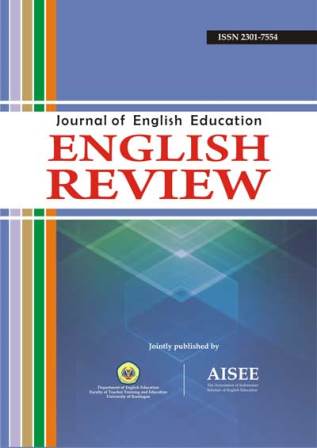Second Language Acquisition And Linguistic Freedom Through Drama
Abstract
The important part played by drama in second language acquisition has long been appreciated. An active and inter-active teaching environment facilitates learning in a number of ways, by motivating and sustaining attention, as well as offering a secure environment for experimentation. Drama offers students a pro-active approach to learning, promoting a collective feeling of being in a shared enterprise. This paper discusses how drama can make a significant contribution to second language acquisition. In particular, I focus on the techniques of the Italian Commedia dell’Arte, the first truly professional theatre form to emerge in Europe in the mid-sixteenth century. Its core elements of improvisation and mask are highly effective tools in language learning, empowering students and allowing them to take ownership of the unfamiliar. Improvisation provides a dramatically engaging forum for experimentation that can help to overcome cognitive blocks and prioritise communication as the ultimate imperative. Masks which leave the mouth free for speech can help students overcome the natural inhibitions that often come with attempts to express oneself in an unfamiliar linguistic code.
Keywords: language acquisition, drama, improvisation, mask
References
Benedetti, J. (2005). The art of the actor: The essential history of acting, from classical times to the present day. London: Methuen.
Brown, H. D. (2000). Principles of language learning and teaching (4th ed.) New York, NY: Longman.
Dervishaj, A. (2009). Using drama as a creative method for foreign language acquisition. Linguistic and Communicative Performance, 2(1), 53-62.
Johnstone, K. (2012). Impro: Improvisation and the theatre. London: Routledge.
Lazar, G. (1993). Literature and language teaching. Cambridge: Cambridge University Press.
Mok, A. (2001). Task-based learning, language arts and the media: A resource book for secondary English teachers. Hong Kong: University of Hong Kong.
Nguyen, P. M., Terlouw, C. & Pilot, A. (2006). Culturally appropriate pedagogy: the case of group learning in a Confucian Heritage Culture context. International Education, 17 (1), 1-19.
Rodenberg, P. (1998). The actor speaks: Voice and the performer. London: Methuen.
All articles published in English Review: Journal of English Education (ERJEE) are licensed under the Creative Commons Attribution 4.0 International License (CC BY 4.0).
Copyright Ownership
Authors retain the copyright of their articles and grant ERJEE the right of first publication. The journal is granted a non-exclusive license to publish, reproduce, and distribute the article in any format, medium, or platform, provided that proper credit is given to the original authors.
License Terms – CC BY 4.0
Under the Creative Commons Attribution 4.0 International License, others are free to:
- Share — copy and redistribute the material in any medium or format
- Adapt — remix, transform, and build upon the material for any purpose, even commercially
As long as they:
- Provide appropriate credit to the original author(s) and source
- Provide a link to the license (https://creativecommons.org/licenses/by/4.0/)
- Indicate if any changes were made
There are no restrictions on the reuse, reproduction, or adaptation of published articles as long as attribution is properly given.
Author Warranties
By submitting a manuscript to ERJEE, authors confirm that:
- The work is original and does not infringe any existing copyright.
- The manuscript has not been previously published and is not under consideration elsewhere.
- All sources and references are appropriately acknowledged.
- Necessary permissions have been obtained for any copyrighted materials used.










